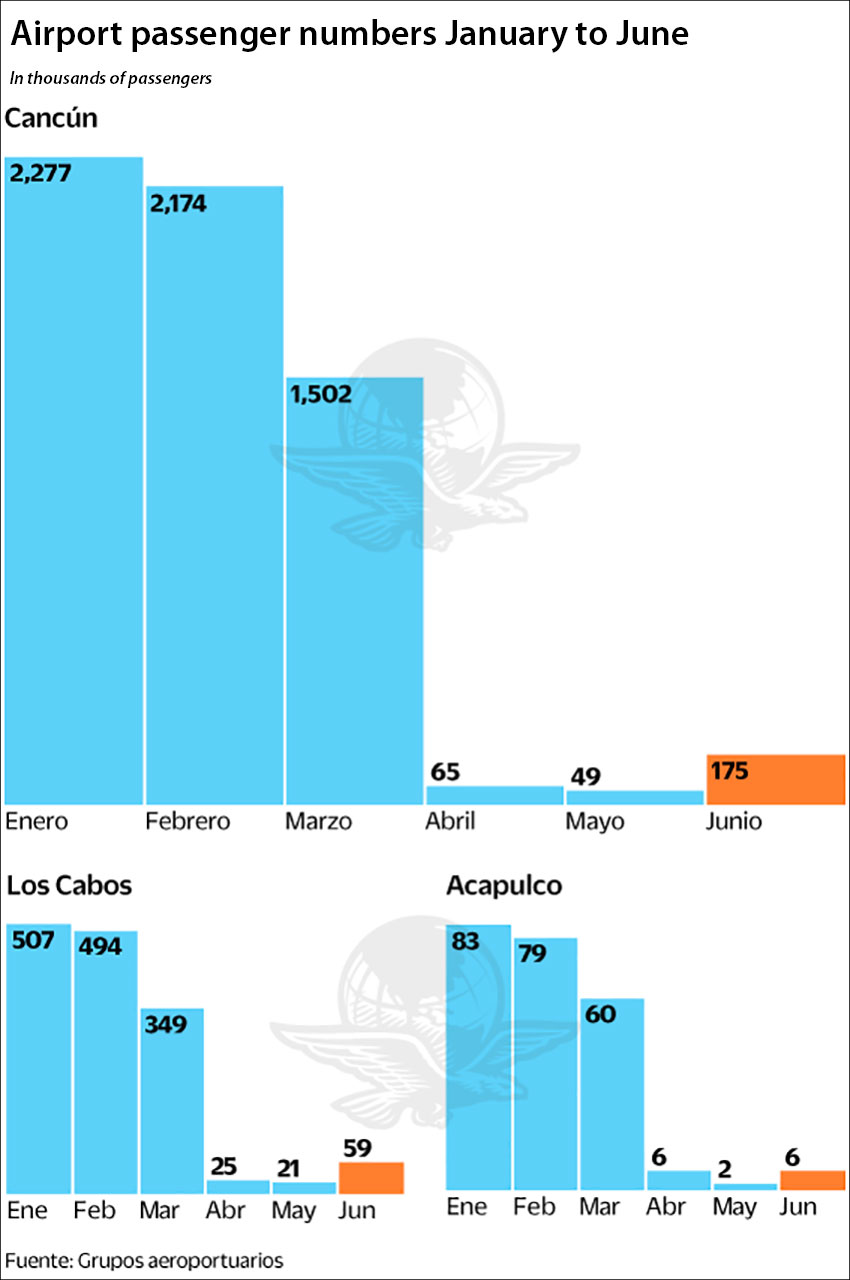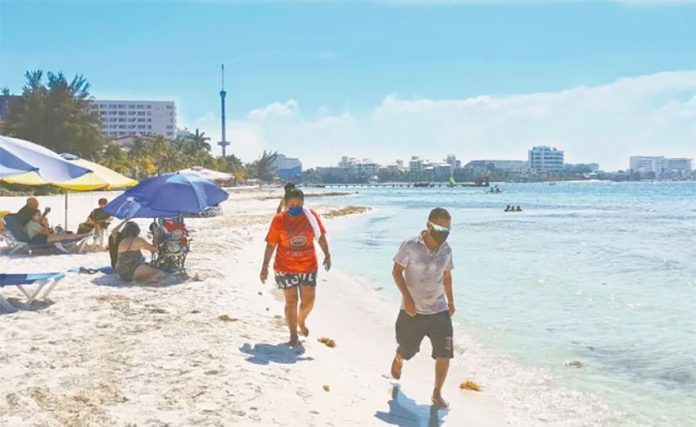Recovering from the economic impact of the coronavirus crisis looks set to be a long and difficult process for the tourism-dependent locales of Cancún, Quintana Roo, and Los Cabos, Baja California Sur.
Hotels and other tourism-related businesses such as restaurants and night clubs were closed for more than two months in both destinations due to nationwide coronavirus restrictions that were put in place between late March and the end of May.
As a result, between US $3 billion and $3.5 billion in tourism revenue was lost in Quintana Roo, according to preliminary estimates by the state Tourism Ministry.
Hotels in the Caribbean coast state began reopening on June 8 but occupancy levels remain low, ruling out any possibility that losses will be quickly recouped.
Cancún’s hotel zone looks like a ghost town, the newspaper El Universal reported, noting that arrivals and departures at the city’s airport are up compared to May and June but still well below pre-pandemic levels.

During the summer vacation period a year ago, flights into Cancún were full, the city’s hotels had occupancy levels above 90%, the beaches were packed with tourists and the restaurants, bars and nightclubs were busy.
Today, the beaches are largely empty – they remain closed to locals – and hotels and restaurants are operating well below their capacity due to both coronavirus restrictions and a lack of tourists.
But visitor numbers are expected to gradually increase in coming months, according to the Quintana Roo Tourism Minister Marisol Vanegas, who said hotel occupancy levels are predicted to reach 60% in December.
The tourism recovery is also progressing slowly in Los Cabos and La Paz, Baja Califoria Sur (BCS), where the coronavirus lockdown caused the industry to lose an estimated 21 billion pesos (about US $1 billion).
During the shutdown period, international passenger numbers at the Los Cabos International Airport declined 96% and domestic traffic fell 80%, said manager Francisco Villaseñor.
Around 600 mainly domestic and United States tourists are now arriving at the airport each day, compared to just 20 or 30 in April and May, but hotel occupancy levels are still only about 20%.
Lilzi Orcí Fregoso, president of the Los Cabos Hotel Association, acknowledged that the recovery has been slow and difficult – BCS hotels began reopening in the middle of June – but noted optimistically that 20% occupancy is better than zero.
She said that 72 of 84 member hotels have reopened but added they are currently only accepting guests in 7,000 of 17,500 rooms.
Agustín Olachea Nogueda, president of the La Paz Hotel Association, said that occupancy levels are just 17.5% compared to 80% at the same time last year.
Tourists braving the pandemic in Los Cabos, La Paz other BCS destinations now have a wider array of activities in which they can partake after 1,500 tour companies were given the green light to get back to business last week pr0viding walking, diving, snorkeling, kayak and glass-bottom boat tours, among other activities.
Meanwhile, the federal Tourism Ministry last week launched an 11.4-billion-peso (US $507.6-million) loan program for the hotel, travel agency and ground transportation industries to help them through the coronavirus-induced tourism downturn.
Source: El Universal (sp)
